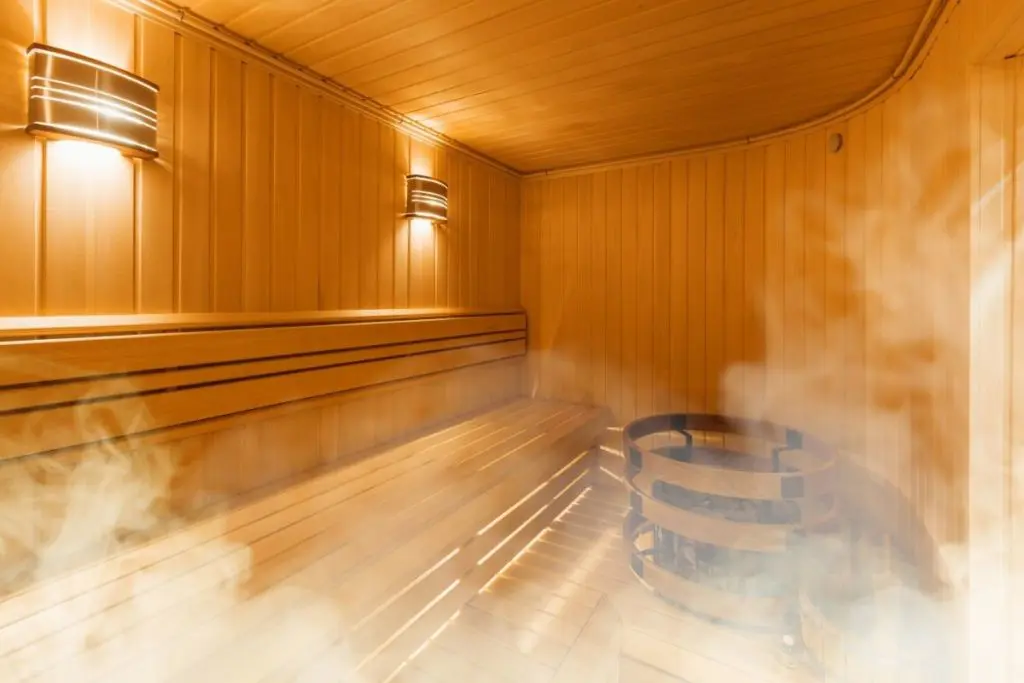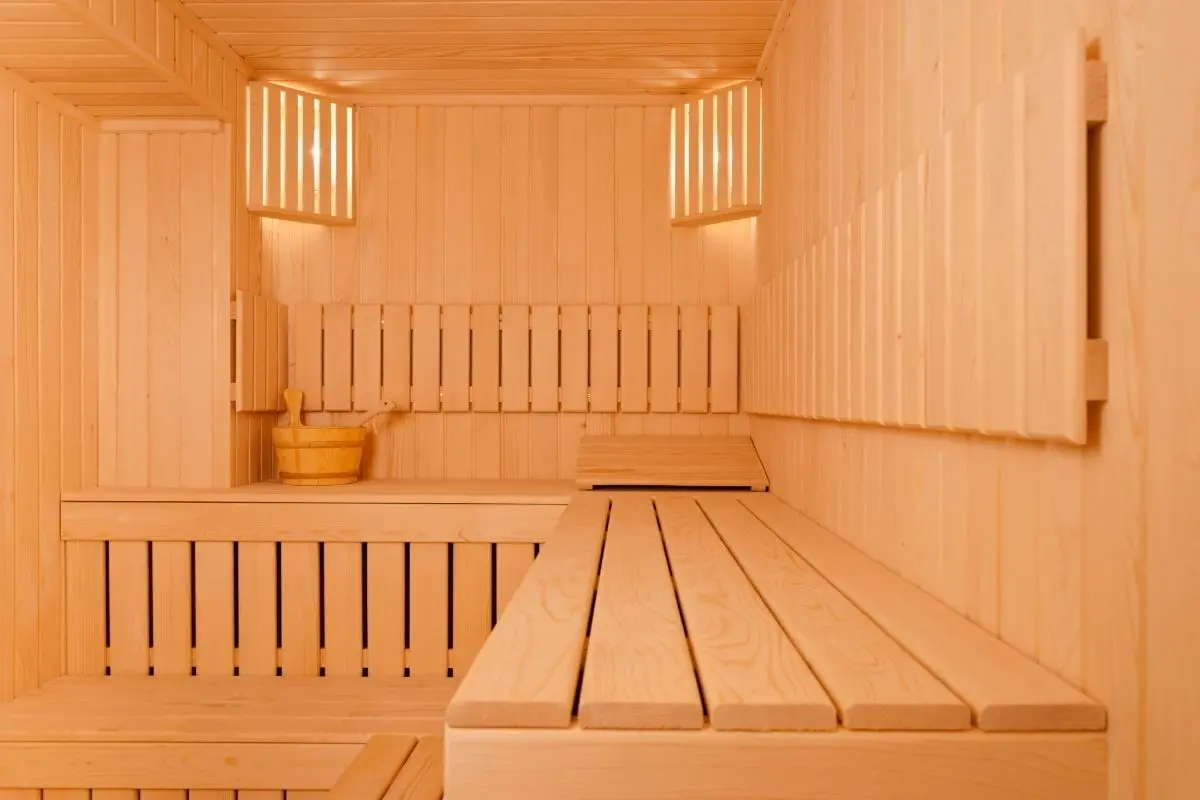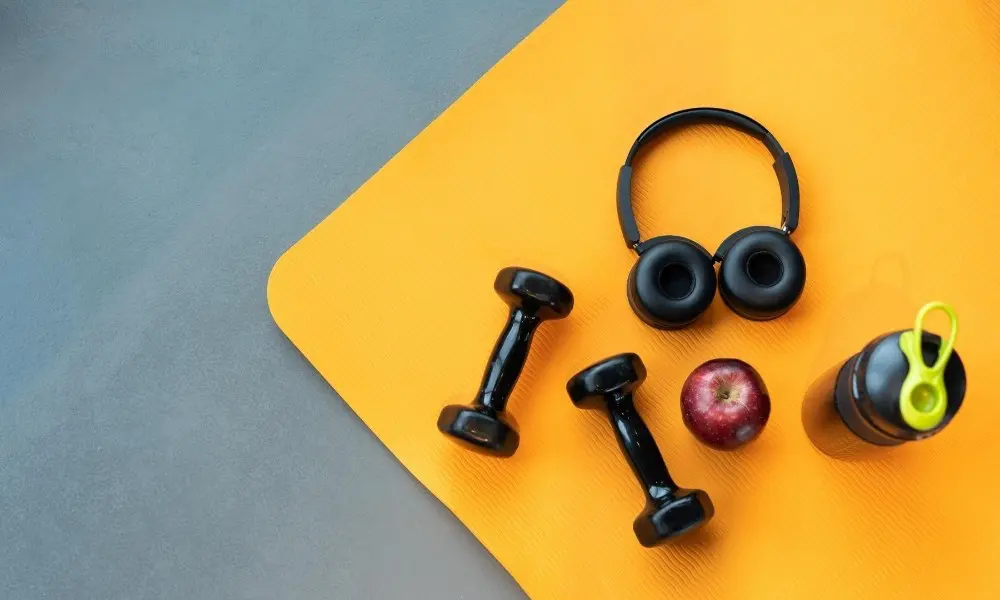Have you had a coach or a trainer tell you, “Hit the sauna after a workout?” Some variation of that has been in so many TV shows and movies about sports, it’s a cliche. Ever stopped to wonder what the benefits of sauna after workouts are — besides, of course, awesome, feel-good, sauna stuff?
There are lots of excellent reasons to sauna after exercise; it turns out. That list includes increased circulation to help prevent muscle soreness, and improved cardiovascular health, to name just a few. Read this article, and you won’t need a reminder to hit the sauna after your next work out- you’ll already be on your way.
Before telling you all about the benefits of sauna after workouts, though, let’s first define what a sauna is.
What Is a Sauna?
Saunas are nothing more than a room or building where bathers perspire in dry heat, commonly from hot rocks or a closed stove. They are common in gyms and many workout or spa facilities. This experience has a whole host of health benefits, which we’ll get into a bit later on.
There’s an important distinction here between saunas and steam rooms, sometimes called wet saunas. The difference is steam rooms use wet heat, usually created by a generator filled with water. This humidity provides its own list of health benefits that are unique to steam rooms. We’ll also go into greater detail about that later on in this article.
Otherwise, here are the stats for both dry and wet saunas regarding heat and humidity:
| Dry Sauna | Steam Room | |
| Max Heat | 158°F to 212°F | 110°F to 115°F |
| Max Humidity | 5% to 10% | 100% |
Whether you choose a wood-burning sauna, an electrically-heated sauna, or even an infrared sauna, the benefits are all pretty much the same. First of all, it’s a relaxing experience that helps you unwind after a challenging workout or a busy day at work. But that’s not all saunas can do. More on that, next.
3 Benefits of Dry Sauna After Workouts
Here are the primary benefits of hitting the sauna after going hard at the gym.
1. Muscle Recovery
During exercise, our muscles work harder than normal — that’s kind of the point. This creates tiny tears in the muscles that cause soreness, inflammation, and tightness, among other symptoms.

Sitting in a sauna boosts oxygen-rich blood flow to your muscles. It helps your muscles relax, recover, and cuts down on next-day soreness. Heat also helps reduce lactic acid, another leading cause of after-workout muscle soreness.
2. Weight Loss
The science behind whether or not sauna use helps you lose weight is somewhat inconclusive. Some studies show regular sauna use over time does lead to a decrease in body fat. Most weight lost through sauna use is water weight through sweat, though. That’s not ideal since you run the risk of dehydration.
Exposure to high heat does elevate your heart rate, as well as your immune and lymphatic system. This burns a few extra calories, and coupled with a healthy diet and a strenuous workout routine, it can result in some weight loss. It certainly won’t hurt; just be sure to stay hydrated.
Also true is that heat from a sauna, especially infrared heat, partnered with drinking plenty of fluids, increases human growth hormone (HGH) production. It also decreases cortisol levels. These two things can help you lose some weight.
3. Body Detox
Another common belief is that saunas help detox your body. Again, there’s inconclusive evidence here. A boosted lymphatic and immune system, which we mentioned earlier, can help the body purge toxins.
In addition, saunas make you sweat, and your body does process some toxins through sweat. But the real detox happens in our kidneys and livers, not through our armpits.
While the science behind detoxing through sauna use isn’t conclusive, there are widely agreed-upon benefits of regular, sauna-assisted, sweat sessions.
Here are just a few:
- Increased circulation, not just to your muscles, but also to organs and other tissues
- You lose excess salt when you sweat, which helps prevent kidney stones.
- Sweating opens up pores in our skin. That allows a barrier to form, which cuts bacteria and defends against pathogens. Spoiler alert: it can also cause acne.
More than anything, the benefit of sweat is that it makes us thirsty. When we’re thirsty, we drink water, and there are many health benefits associated with adequate hydration.
Are all the health benefits of sauna use limited to post-workout? That answer is coming up next.
Benefits of Dry Sauna Before Workouts
The benefits of sauna before a workout are not so different from the benefits of the sauna after working out. It loosens up our muscles and revs up our system, including our heart rate. This gets your body ready for action. Nice ‘n’ loose muscles before exercise help prevent injury, and it also cuts down on soreness after exercise.
The relaxing effect of sauna use also helps focus the mind, which gets you in game mode. But perhaps the most significant benefit of saunas before a workout is that you’ll get thirsty and drink more water.
Sufficient hydration before exercising has a whole host of health benefits on its own. Experts recommend drinking up to 8 ounces of water 30 minutes before exercise, in fact, and 8–10 ounces during your workout.
So far, we’ve talked mainly about sauna use after exercising, but what about steam room use after a workout? We’ll cover that now.
Benefits of Steam Room After Workouts
Steam rooms are humid; saunas are dry. That’s the primary difference.
Prolonged exposure to any heat, wet or dry, offers many similar benefits: increased circulation, muscle relaxation, and marginal benefits with weight loss and body detoxification.
This is just as much true in a steam room as it is in a sauna.
There are some benefits unique to steam room use, however.
Improved Breathing
Kids with colds are often encouraged by their parents to take a hot shower or breath in water vapor to clear congestion and relieve sinus pressure.
Even if you’re not suffering from a cold, exposure to steam — like in a steam room — does moisten mucous membranes, opening nasal passages, and helping us breathe properly. This process can help distribute enough oxygen to our muscles before a workout, or replenish oxygen in our muscles after exercise.
It’ll Clean Out Your Pores!
All heat opens up your pores, but wet heat in a steam room really does the trick. Open pores expel toxins, plus the humidity will moisturize your skin — bonus!
Like a sauna, though, probably the most significant benefit of a steam room after a workout is that it simply feels good!
Whether you choose a steam room or sauna, and whether it’s before or after your workout, there are some safety issues to be aware of. Too much time in the heat can have some negative health effects. Here’s what to watch for.
Risks of Sauna Use After Exercising
Prolonged exposure to warm temperatures can overheat the body. While sweating is the point of a sauna or steam room, too much sweat is never a good thing because it causes dehydration. If you don’t drink enough water while working out, you may already be dehydrated, and the sauna or steam room will only make it worse.
Here are some warning signs of dehydration:
- Urinating less than usual
- Dry mouth
- Feeling extra thirsty
- Headaches and dizziness
- Feeling lightheaded
Those suffering from chronic diseases like diabetes, kidney disease, or heart failure are extra susceptible to dehydration and should consult their doctor before sauna use.
Those with blood pressure issues should also be careful when using a sauna. That’s particularly true if they plan on alternating prolonged exposure to heat with cold pool water. This quick change in temperature can cause blood pressure to fall, and that can lead to a heart attack.
To reduce the risk of dehydration through sauna use, be sure to drink plenty of fluids — do we sound like a broken record yet?
And if you suffer from any chronic diseases, check with your doctor before using a sauna. Women who are pregnant should also check with their doctor before using a sauna.
Here are some additional safety precautions:
Don’t Drink Alcohol
Alcohol increases the risk of dehydration, hypotension, low blood pressure, and even heart arrhythmia, which can be made worse by the heat of a sauna or steam room.
Don’t Wear Too Many Clothes
Only enter a sauna in shorts, a bathing suit, or better yet — naked, if allowed (except for a towel, of course).
Cool Off Gradually
After exiting the sauna, give yourself ample time to cool down before hitting the pool or taking a shower.
Last, don’t bring your cell phone in the sauna because believe it or not, the heat will damage the device. Plus, it’s a little rude, and the fact that phones have cameras could make others in the sauna feel uncomfortable.
So how long is it safe to stay in a sauna after workouts? Well, according to the American College of Sports Medicine, it depends. Here’s what you need to know:
Additional Tips
- For Beginners. Beginners with saunas and steam rooms should only stay in for 5–10 minutes at a time.
- For Post-Workout. Sauna use after a workout should never exceed 10 minutes.
- For Everybody Nobody should use a sauna longer than 15 minutes at maximum.
Many use the sauna at their gym or health club, and some have saunas in their homes. There are a few different kinds of saunas. We’ll conclude by telling you a bit of that, exactly when they started, and how long humans have enjoyed the restorative and rejuvenating power of heat.
What Are the Different Kinds of Saunas?

There are four different types of saunas: the traditional Finnish sauna, the dry sauna, the infrared sauna, and a steam bath, sometimes called a wet sauna, or a steam room. We’ve pretty well covered the benefits of dry saunas and steam rooms, but here are some defining characteristics of traditional Finnish and infrared saunas.
Traditional Finnish Sauna
Combining the best aspects of saunas and steam rooms, the elevated temperature in a traditional Finnish sauna comes from heated rocks.
Using a ladle, water pours onto the warm rocks, which creates humidity — reaching as high as 40%. If a user wants less humidity, they merely add less water.
This simple process makes the traditional Finnish sauna the best choice for those who seek a mix of heat and humidity that they can easily customize to their comfort level.
Infrared Sauna
There is absolutely no humidity in an infrared sauna, like, none. Infrared saunas also don’t get as hot as other kinds of saunas.
Infrared saunas are the best choice for those looking to enjoy a sauna experience but who also have prolonged health issues that make humidity dangerous.
Furthermore, some believe the concentrated and efficient heat of an infrared sauna elevates many of the already mentioned health benefits of regular sauna use.
What Is the History of the Sauna?
Speaking of the traditional Finnish sauna — Finland is also the home of the sauna, dating back to around 1100 AD.
These early saunas were holes in the ground and warmed with stones. Called savusaunas, or smoke saunas, these structures doubled as people’s homes in winter.
Eventually, the Finnish built their saunas above ground with logs. To this day, Finland is known as “Sauna Capital of the World.”
The Finnish weren’t the only culture to notice the therapeutic effect of prolonged heat exposure. Among the most well known are the Turkish and ancient Romans baths.
Mayans had their own sweat baths called zumpul-ché.
Constructed from stone, these structures had small openings in the ceiling, and the heat was created by pouring water on hot rocks.
The Maya believed this would treat all sorts of conditions and expel all sorts of impurities from the body. Over the millennia, not much has changed, has it?
Wrapping Up
As we’ve seen, there are many health benefits to using a sauna both before and after a workout.
Those benefits include increased circulation, and quicker muscle recovery time after heavy exercise, among others. There are some unique health benefits associated with steam room use, as well.
There are also some safety issues associated with saunas and steam room use that everyone should be aware of, but particularly those with certain health conditions.
Add regular — and safe — sauna use to your workout routine, and we promise you won’t regret it.
Further Reading
.






